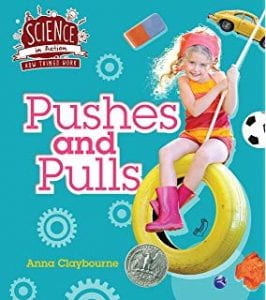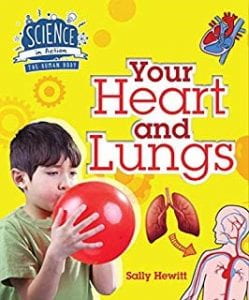Children’s general non-fiction is the fastest growing category in publishing. Publishers (and readers) claim that we are living in a ‘golden age’ of children’s information books. With so many books out there, how do we decide what to buy and for what purpose, what to read to our class, what to give to our children?
At this time of year, the Federation of Children’s Book Groups (FCGB) organises National Non-Fiction November and School Library Association (SLA) runs their Information Book Award. The latter includes a children’s choice award. These initiatives aim to celebrate the best in children’s non-fiction.
What do we mean by the best? Our judgement may be influenced by the purpose intended for the book: are we looking for reference, an explanatory text, practical advice, or to spark interest, for instance? Look at the language: can the book be read aloud, many times over? If selecting for the school library, do we seek out books that appeal to a wide age range, or books that have stand-out features? Is it value for money? Is it durable? Librarians are often wary of pop-ups, flaps and suchlike interactive features as susceptible to loss or damage. This is something to bear in mind if buying for the school library or your class book corner, but on the other hand these books are popular with children and make great presents. Will the content last, in terms of relevance? Remember the different perspectives of children and adults. In book awards where one panel is made up of adults and another of children, their choices sometimes match, but not always. These and many more questions and considerations were raised at IBBY UK conference, which I attended last weekend – of which, more later. How do we identify excellence? Where can we find signposts to good quality information books for children?
Explore the great range of children’s information books which we hold in the Curriculum Centre. Some of these are shelved in the curriculum subject areas, and we also have a small collection called ‘Reading for Information’ at the start of the Picture Book collection. This is a shelf full of specially selected, high quality books on a variety of topics. They will often be award winners, and another shortcut to finding really good non-fiction is to seek out award winners, past and present. We keyword prize winning children’s books on our catalogue, with the term “book awards”.
Check out the websites of the FCGB and the SLA for news of their non-fiction shortlists. There is also the Royal Society’s Young People’s Book Prize, and Blue Peter’s Book Awards include a category for the best book with facts. These books have been sifted, selected, long listed and short listed by experts of various sorts: teachers, school librarians, scientists, and children. Some of the organising bodies also produce resources around their competition which will help you make the most of these books with your class.
National Non-fiction November was launched in 2010 to celebrate narrative non-fiction, with the aim of supporting reading for pleasure. The Chair of the FCGB, Chris Routh, spoke at the conference which I was fortunate to attend last Saturday. This was the annual conference of IBBY UK (International Board of Books for Young People, UK branch). The theme this year was: ‘A world of information: children’s non-fiction books in a digital age’.
Many school libraries have traditionally relied on the more functional books, often produced as series, from reliable publishers such as Wayland, Franklin Watts and Raintree. They are brought out in response to curriculum and teachers’ needs, and school librarians (or the teacher in charge of the library) will buy one of each to ensure all the bases are covered. They serve a purpose. However, they usually rely on a factual, instructional mode. They may be revisited for fact-checking, but don’t invite repeated rereading and mining for pleasure.
 In contrast to this, IBBY conference contributors and discussion focused on the narrative, lyrical ‘literary’ style. Speakers included authors and illustrators Nicola Davies, Neil Layton and Yuval Zommer. We had round table discussions with publishers of high quality children’s non-fiction (Wren & Rook, Flying Eye, Thames & Hudson), and presentations from academics, librarians and researchers. Unpicking the hard boundaries of fact and fiction was a common theme. Nicola Davies doesn’t distinguish between the two in her work. Her fiction is often inspired by and addresses real-life social or environmental concerns.
In contrast to this, IBBY conference contributors and discussion focused on the narrative, lyrical ‘literary’ style. Speakers included authors and illustrators Nicola Davies, Neil Layton and Yuval Zommer. We had round table discussions with publishers of high quality children’s non-fiction (Wren & Rook, Flying Eye, Thames & Hudson), and presentations from academics, librarians and researchers. Unpicking the hard boundaries of fact and fiction was a common theme. Nicola Davies doesn’t distinguish between the two in her work. Her fiction is often inspired by and addresses real-life social or environmental concerns.
There was a plea to allow in the gaps between the facts, to admit that we don’t know everything, and that sometimes new evidence can counter old certainties. Boundaries are also increasingly blurred between books destined for schools and those destined for home, combining reading for pleasure with reading for information.
In recent years, we have seen a renaissance of high quality non-fiction. Conference contributors suggested this dates back six or seven years – I would argue longer. There have been trends in style over this period that you will recognise:
- A move from photographs to rich and distinctive illustrations
- Large format
- Genre challenging, adopting and adapting features of graphic novels, multimodality, and subverting typographic and stylistic norms.
Trends in content have moved through:
- Citizenship and social justice, including diversity, refugees, children’s rights
- Good night stories – tales of inspirational role models
- Middle grade self-help; mental health
- Environmental concerns.
Publishers and author/illustrators predicted upcoming trends:
- Biodiversity (Flying Eye)
- Publishers trying to keep up with our ever-changing world = faster turnarounds (Neil Layton)
- Thames and Hudson were less interested in trends, but wondered about possibility of revival of older themes
- Yuval Zommer nominated geopolitical themes, and argued, crucially, that we can’t separate the science from social activism. This will be reflected in children’s non-fiction, as it is already with Greta Thunberg and No one is too small to make a difference.
Yuval Zommer (author/illustrator) was a thoughtful contributor. His latest offerings are large format and subvert convention as a contribution to meaning, not as a gimmick. For example, The street beneath my feet goes up and down rather than left to right – which suits the subject. It is in concertina or ‘leporello’ format, and folds out to 2.5 metres in length (or depth). Yuval told how books such as this can be spread along the school corridor and looked at by groups of children. This attracts a wider range of ages and abilities who can spot and discover. His pictures are non-didactic; they allow discovery learning – show and not tell.
We will shortly be displaying some of our newest and most interesting non-fiction in the Centre. Do come along, explore, and enjoy.






